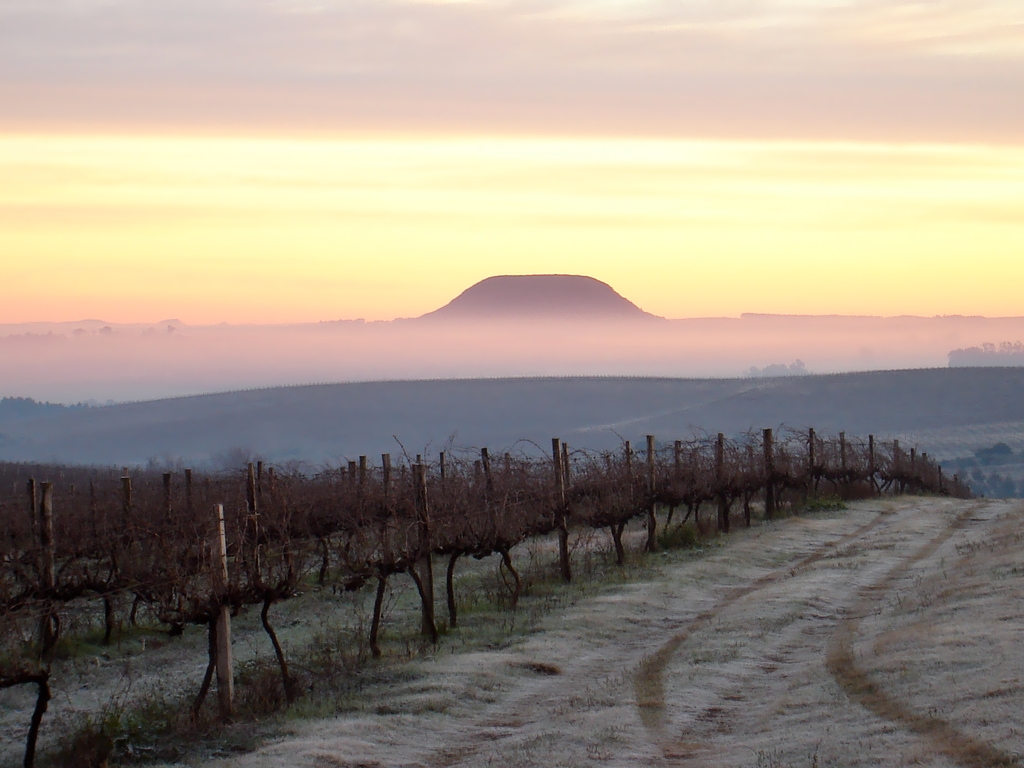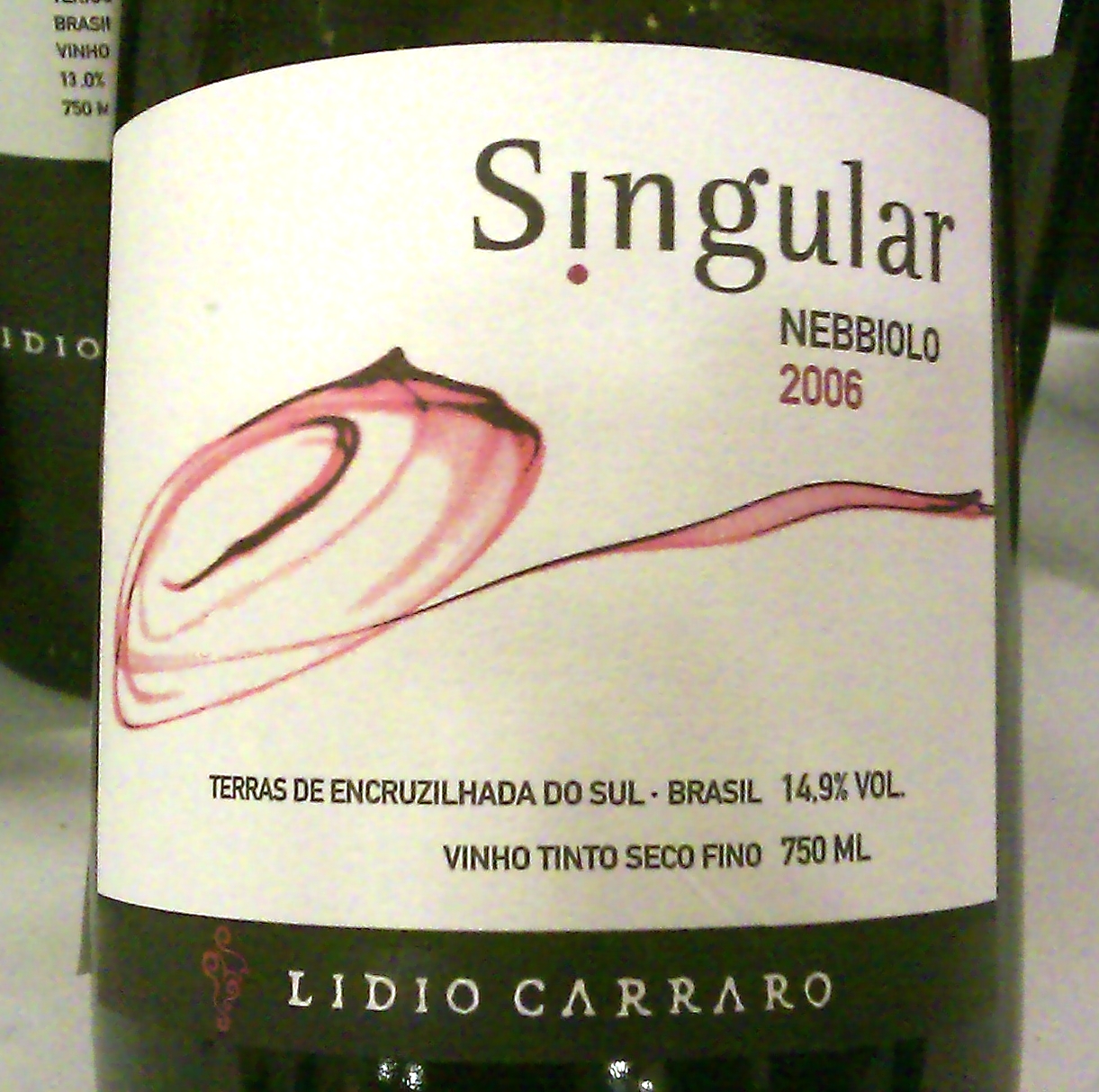A taste of wines from Brazil
Posted on 18 June 2011
Brazil is a large producer of wine. Currently it’s the 15th biggest wine country, producing more than New Zealand, Austria or Hungary. I bet you didn’t know it – Brazil’s ascension to international wine recognition is very recent. It’s only four years since the national agency Ibravin has been promoting Brazilian wines abroad, supporting export and inviting journalists to its vineyards (such as Oz Clarke and Julia Harding; you can also read this good article on Vinography).

Brazil’s extreme south has a temperate climate ideal for viticulture. © Miolo.
Opinions on Brazilian wines seem to converge on several points: surprisingly good (and surprisingly good value) sparkling wines; red wines better than white; wines that are juicy, fresh, with moderate alcohol, and stylistically come closer to Europe than Brazil’s New World neighbours: Uruguay, Argentina or Chile. All these aspects were confirmed at a recent comprehensive Brazilian tasting here in Poland where I sampled through 30 different wines. Brazilian fizz does indeed look exciting, both in its bottle-fermented champenoise (including a very nice Brut 130 from Casa Valduga) and cheap & cheerful vat-fermented (à la Prosecco; see Piagentini’s Prosecco Brut) versions.

Brazil might soon be supplying the world’s best-value fizz. © Casa Valduga.
The good dry still whites were few and far between, but the Pinot Grigio–Riesling 2009 from the large Miolo winery was certainly vibrant and attractive, unlike the many oaked Chardonnays that seem stuck in an obsolete 1990s style. But the really exciting wines were all red, substantiating Brazil’s position as a New World challenger. At the moment, the excitement focuses on the lower and middle shelf. Wines I liked include Pizzato’s 2005 Tannat Reserva and the simple inexpensive 2006 Merlot Fausto de Pizzato; these are dense, meaty wines that will go well with Brazilian beef (every bit as good as Argentine). Another good bottle is the 2004 Talento Bordeaux blend from Salton: what a supremely drinkable, juicy, reasonably concentrated and balanced wine. The 2006 should follow along the same lines.

Better than most of the 100 or so Tannats I know from Uruguay.
The best range, for me, came from Lidio Carraro, a producer that boasts some excellent vineyards on granite soils in the Vale dos Vinhedos appellation that is emerging as the origin of Brazil’s finest wines. Carraro’s 2007 Elos Malbec–Cabernet showed exactly what is Brazil’s major advantage: it’s new-worldly dense and fruity but stops at an acceptable 13% alc. with a sense of natural freshness (none of the coarse acidification of many Australian wines here), and never really becomes heavy or cloying. Another surprising bottle was the Nebbiolo 2006 – I’m usually very skeptical of any experiments with this notorious bad traveller among grape varieties, but Carraro manages to render Nebbiolo’s flowery bouquet and insistent acidity with faithfulness and style. Another exciting aspect of Lidio Carraro is that they use zero oak: a bold decision indeed on today’s world wine market.

The best Nebbiolo I know outside Italy (out of maybe 20 tasted).
It’s clear Brazil can produce some exciting wines. On this tasting, however, I felt that stylistic coherence is lacking. Bordeaux blends, Syrah, Tempranillo, Uruguayan Tannat, Argentine Malbec are planted side to side, but rather than enriching the offer, they generate confusion and it’s never very clear what style to expect from a bottle of Brazilian red. It was telling that large producer Casa Valduga’s middle range is branded ‘Identidade’ but includes such marginal curiosities as Marselan and Arinarnoa. If Brazil is set on matching the export success of a country like New Zealand, it needs to utter a more coherent message.

The best Marselan I’ve had in 2011 (out of 1 tasted).
Brazilian wines are here to stay, though. The prospects for this wine industry look rosy indeed. Although Brazil has nearly doubled its plantings in the last decades (you can see some statistics in my original Polish post), it still supplies a mere 20% of its own wine consumption. Millions of people are of Italian or other European descent here, and European culture is deeply rooted so as the society grows more affluent in one of the most dynamically developing world economies, wine consumption is almost guaranteed to grow exponentially – especially given that globally, it’s one of the lowest figures in any major wine-producing country. A strong local market will allow producers to invest and increase quality and exports should follow. I’m sure I’ll be writing more about Brazilian wines in the future.
Disclosure
All wines were tasted at an Ibravin-organised tasting in Poland where I was invited as a journalist.

